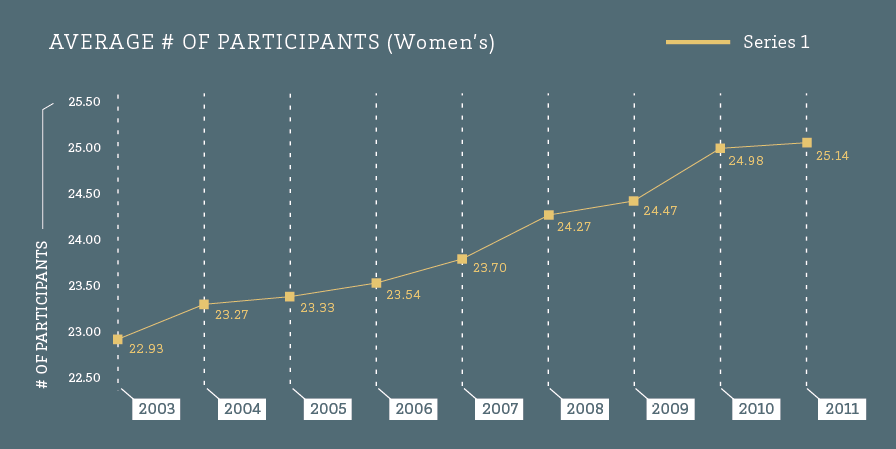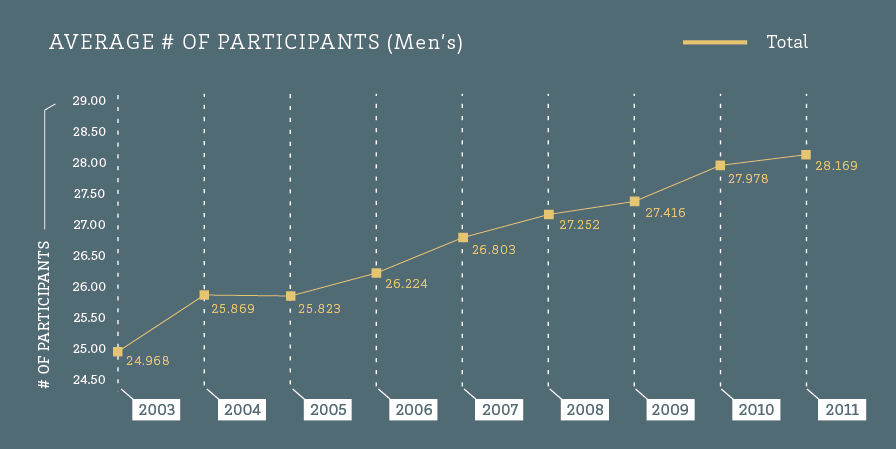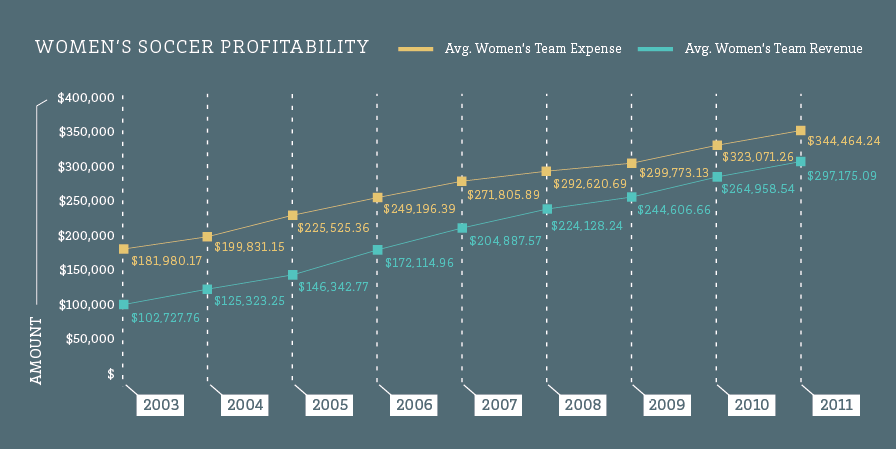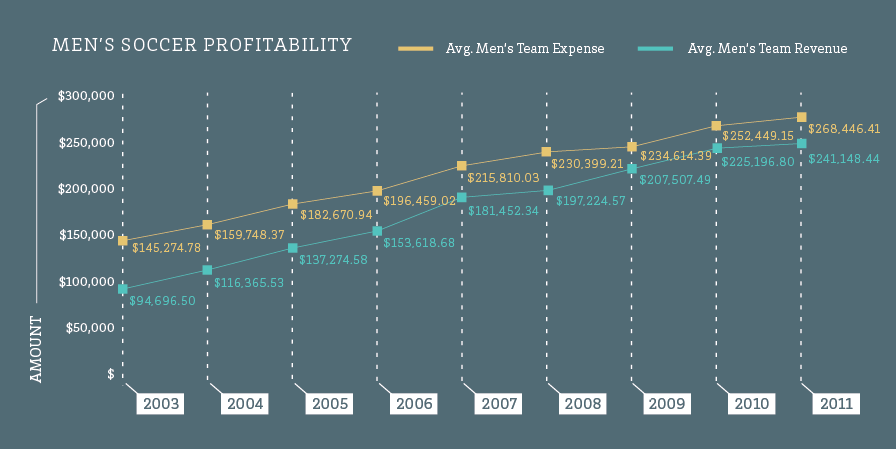
Key Finding
“For savvy programs, investments are paying dividends on the field and off—revenue generated by the sport has nearly tripled for men’s and women’s soccer. The average program still operates at a loss, but that gap is closing steadily. In 2003 (on average) men’s soccer programs lost around $50,000; $80,000 for women. In 2011, that number has dropped nearly in half for both sides of the sport: around $25,000 for men, and $50,000 for women.”
Over the last few years, much has been written about soccer’s surging popularity among the American youth. So the thinking goes, there’s a whole generation of kids growing up in a more culturally diverse country weaned on FIFA video games, exposed to globalized media, and raised by parents with a deepening aversion to the inherent brutality of American football.
For the most part, it’s sound logic by thinkers with a keen social eye. But metadata has a way of confirming the forest for the trees. So when ESPN’s Sports Poll database recently found soccer to be the second most popular professional sport, behind only the NFL—among Americans between the ages of 12 and 24—it more or less silenced any doubt.
A significant portion of ESPN’s particular subset resides in university housing, which prompted Winthrop Intelligence to ask: “Where does the college game place in all of this? Does NCAA soccer reflect the sport’s general spread?” The answers are complicated, but the findings are curious ones nonetheless.
For this analysis, we considered the count of participants on each squad, operating and overall expense, and overall revenue for 953 women’s soccer programs; and 803 NCAA men’s soccer programs between the years of 2003 and 2011.
Make no mistake: college soccer is growing steadily, and it’s growing significantly. Athletic programs are devoting more and more resources towards developing their soccer programs.
For starters, average roster sizes are expanding. In 2003, the average program carried just under 25 men, and just under 23 women. By 2011, those numbers had climbed to over 28, and over 25, respectively.
On a case-by-case level, bigger rosters have typically meant better performance on the pitch. Tulsa’s women’s program fielded 11 more athletes in 2011 than it did in 2003, tied for the biggest expansion in D-1 over that time period. More depth is likely one of the factors why the Golden Hurricanes have been surging of late, bettering their previous season’s win percentage for a third straight time in a year that saw their most wins in over a decade, and first ever C-USA Championship appearance.
We profiled Tulsa’s Kyle Cussen as a star coach in women’s soccer this past February alongside Iowa State’s Wendy Dillinger, whose Cyclones squad grew by ten players over our time frame, tied for the second most with Virginia, who has since rattled off three straight top ten finishes in the RPI. In men’s D-1 soccer, the team with the largest roster expansion over our timeframe was North Carolina, who coincidentally claimed the NCAA championship the very following season.
Bigger teams also mean bigger budgets. Expenses have nearly doubled over that timeframe. In women’s soccer, the largest percent increase in expenses belonged to Duke’s Lady Blue Devils, at nearly 650%. In the season’s following our analysis’s timeframe, Duke’s investment brought an NCAA runners-up and elite eight appearance.
On the men’s side of things, Connecticut’s 1.2M budget increase was the largest in the sport from 2003-2011. Since a disappointing 9-8-4 campaign in 2003, the Huskies have steadily refocused their sights back on the national title, recently recording back-to-back top 10 RPI finishes.
But investments aren’t only paying dividends on the pitch anymore. In fact, revenue generated by the sport has nearly tripled for both men’s and women’s soccer. The average program is still operating at a loss, but that gap is closing fast. In 2003, men’s soccer programs lost around $50,000 on average; $80,000 for women. In 2011, that number has nearly halved for each: around $25,000 for men, and $50,000 for women.
To go more in depth, 62 of the 117 women’s programs, and 30 of the 60 men’s programs analyzed here, saw the rate at which their revenue outpaced the rate at which their expenses grow.
So what does this trend portend for college soccer’s future? Can soccer become self-sustaining? Based on the current rates, that’s still over a decade out. Moreover, some subdivisions appear to have hit a ceiling, at least in D-1. In the more established top echelon of NCAA soccer, average roster size has appeared to have topped out around 28.5 participants. And most significantly, the sport’s deficit has stagnated at around -$360,000 for women, and widened from -$320,000 to closer to -$400,000 for the men.
As is the case for most programs, soccer has a long way to go before becoming a major revenue generating sport. But there’s no doubt that its progress is worth monitoring. Eyes all over America are starting to drift towards the pitch, and based on the results here, those on college campuses are no exception.








